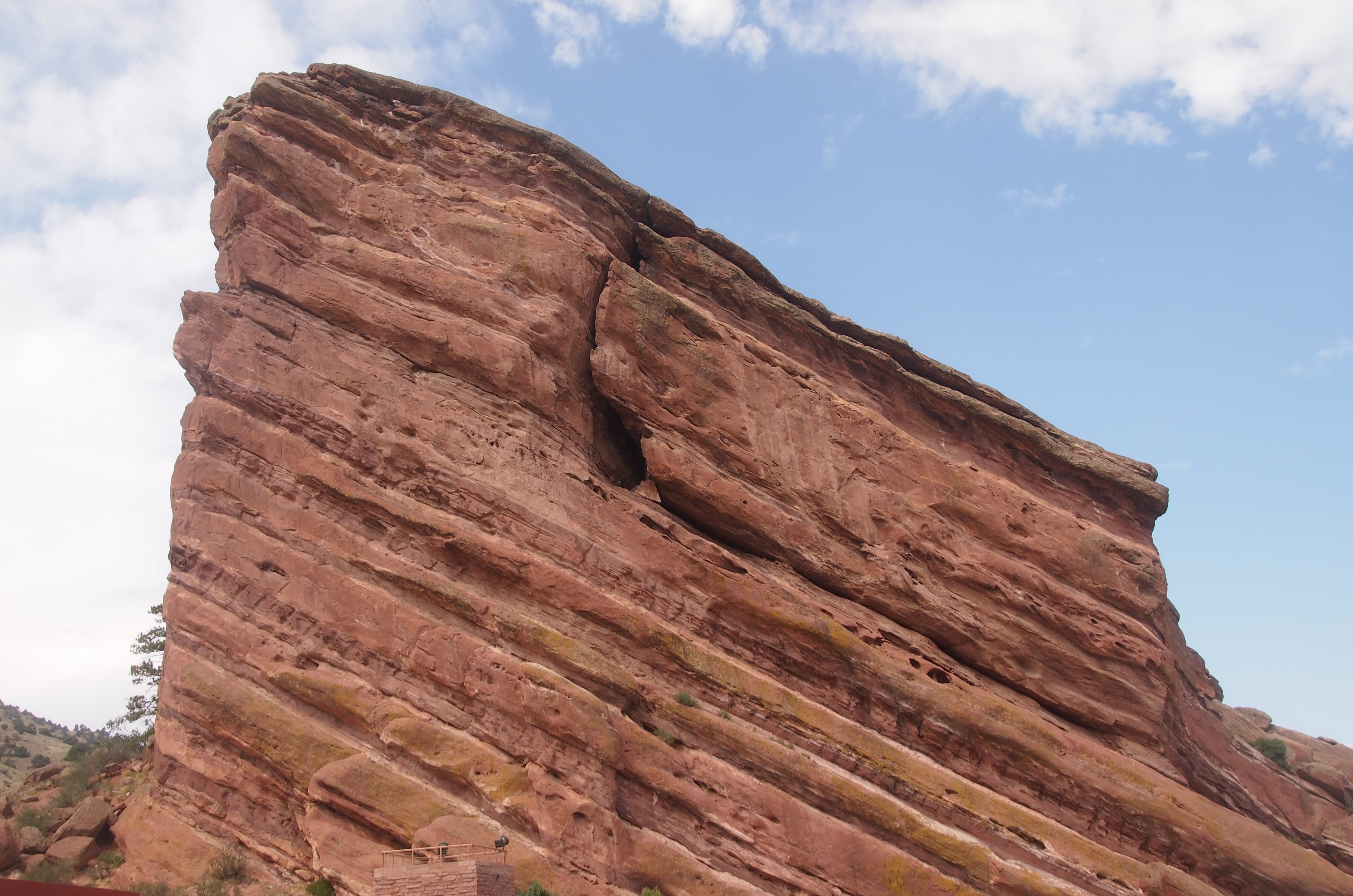Not far west of Denver, near Morrison, Colo., is Red Rocks Park and Amphitheatre, occupying about 900 acres in the iron-oxide tinted sandstone foothills of the Rockies. At the heart of the park, enormous outcroppings, roughly 300 feet high, form a natural amphitheater. It’s a place to stand and gape. That’s what I did.
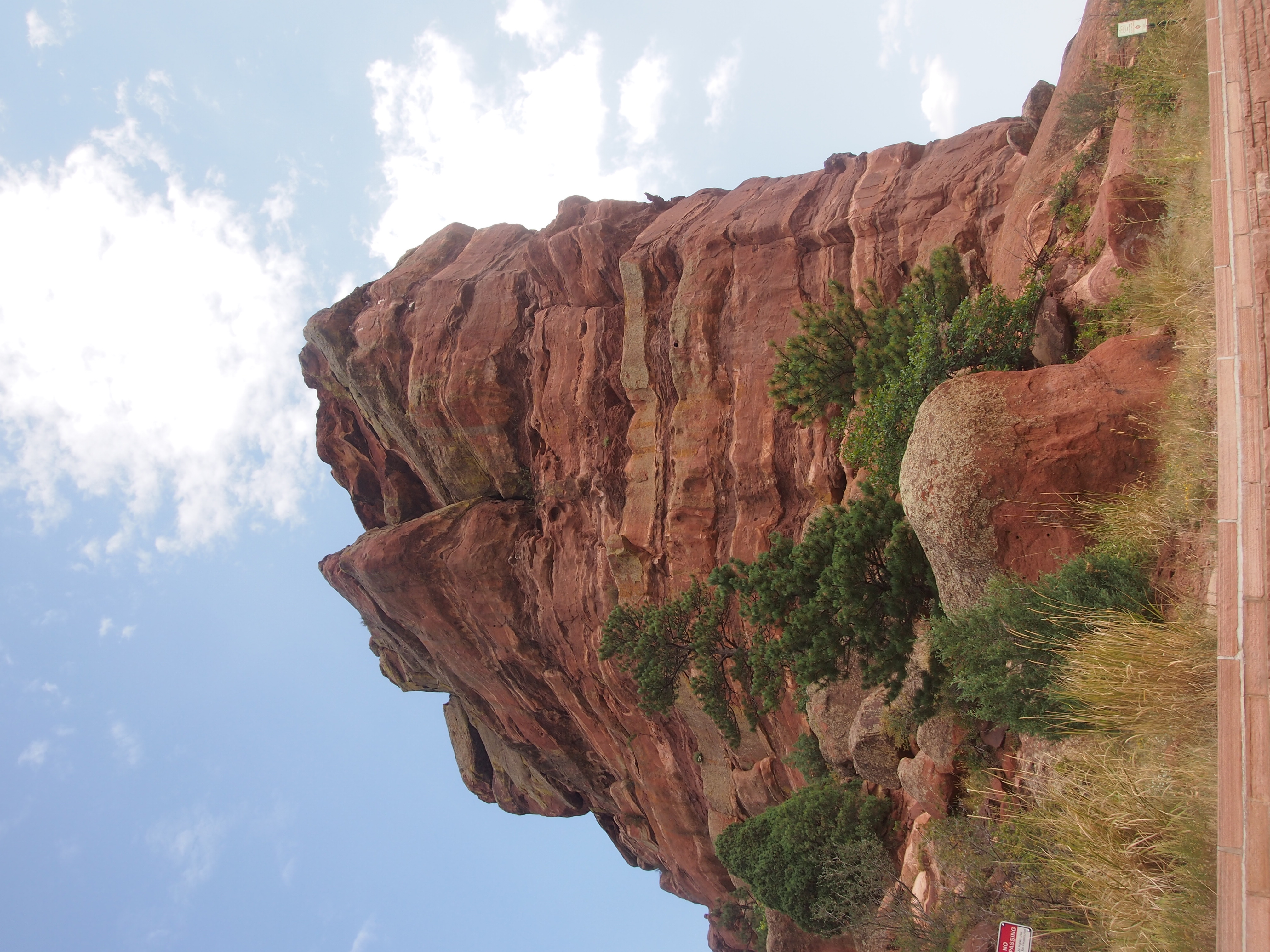
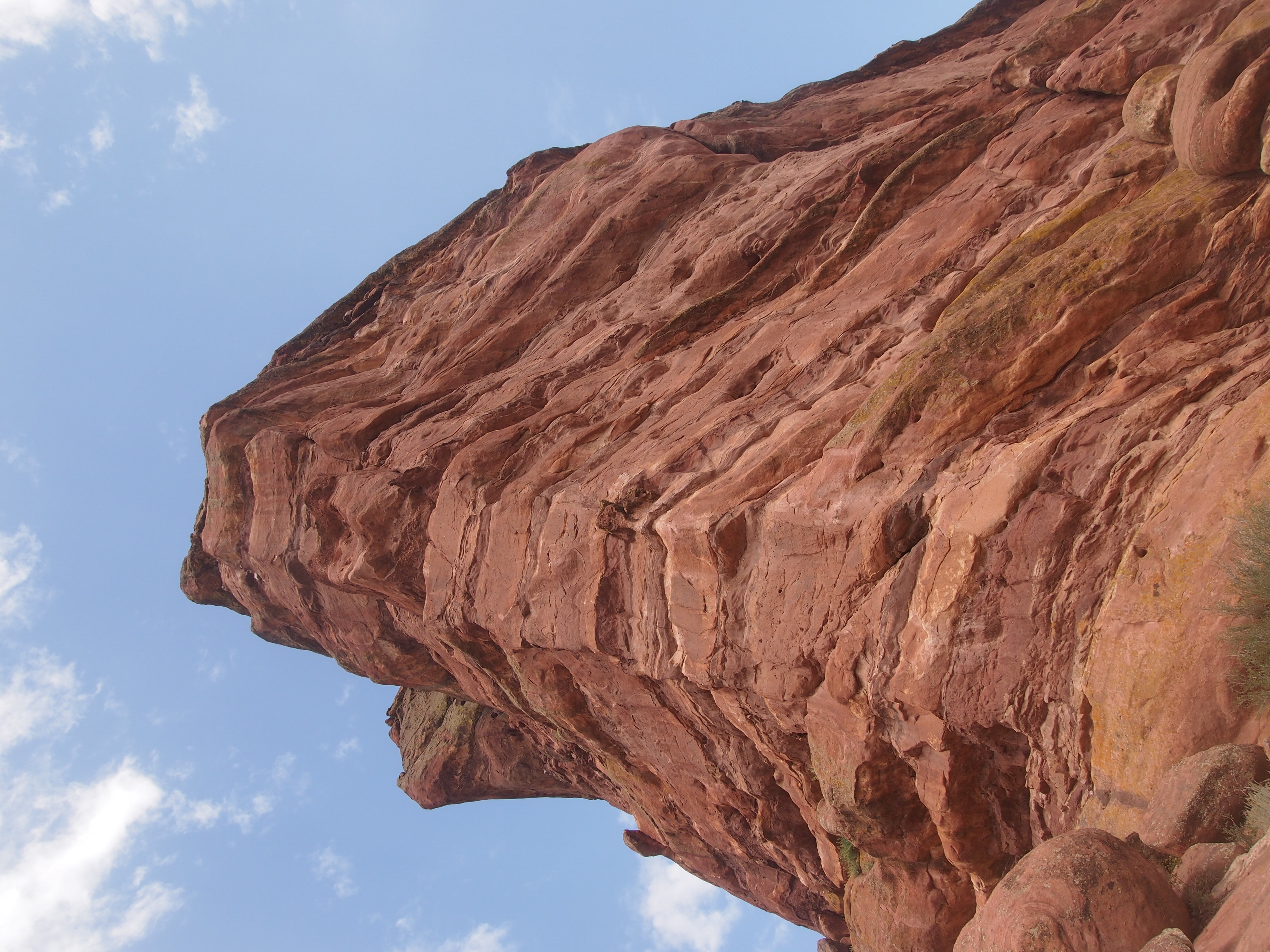
So did a lot of other people. One thing to do was stand at the top of the man-made structure within the natural amphitheater, and look down.
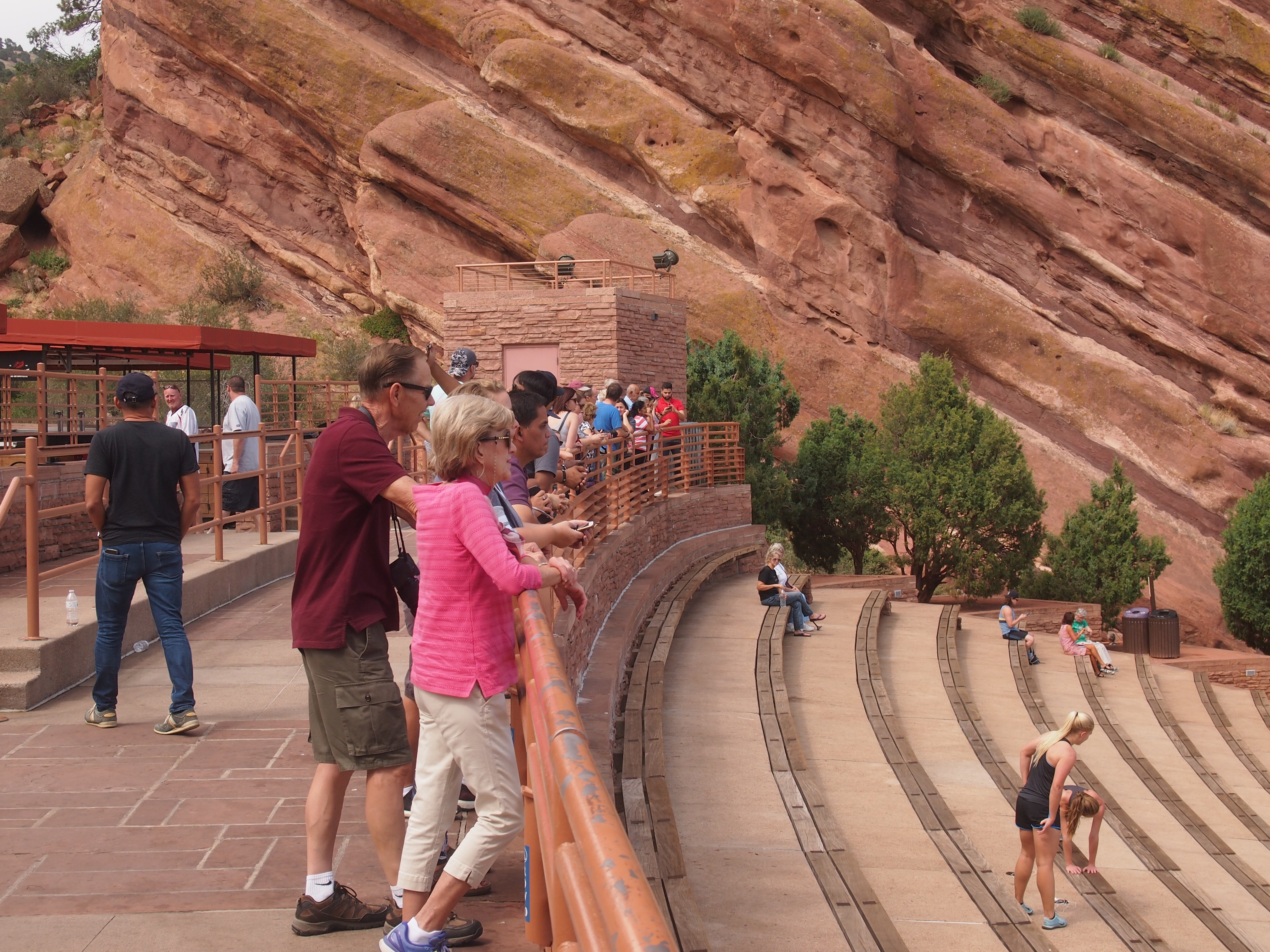 Down at the stage, which is backed by an outcropping.
Down at the stage, which is backed by an outcropping.

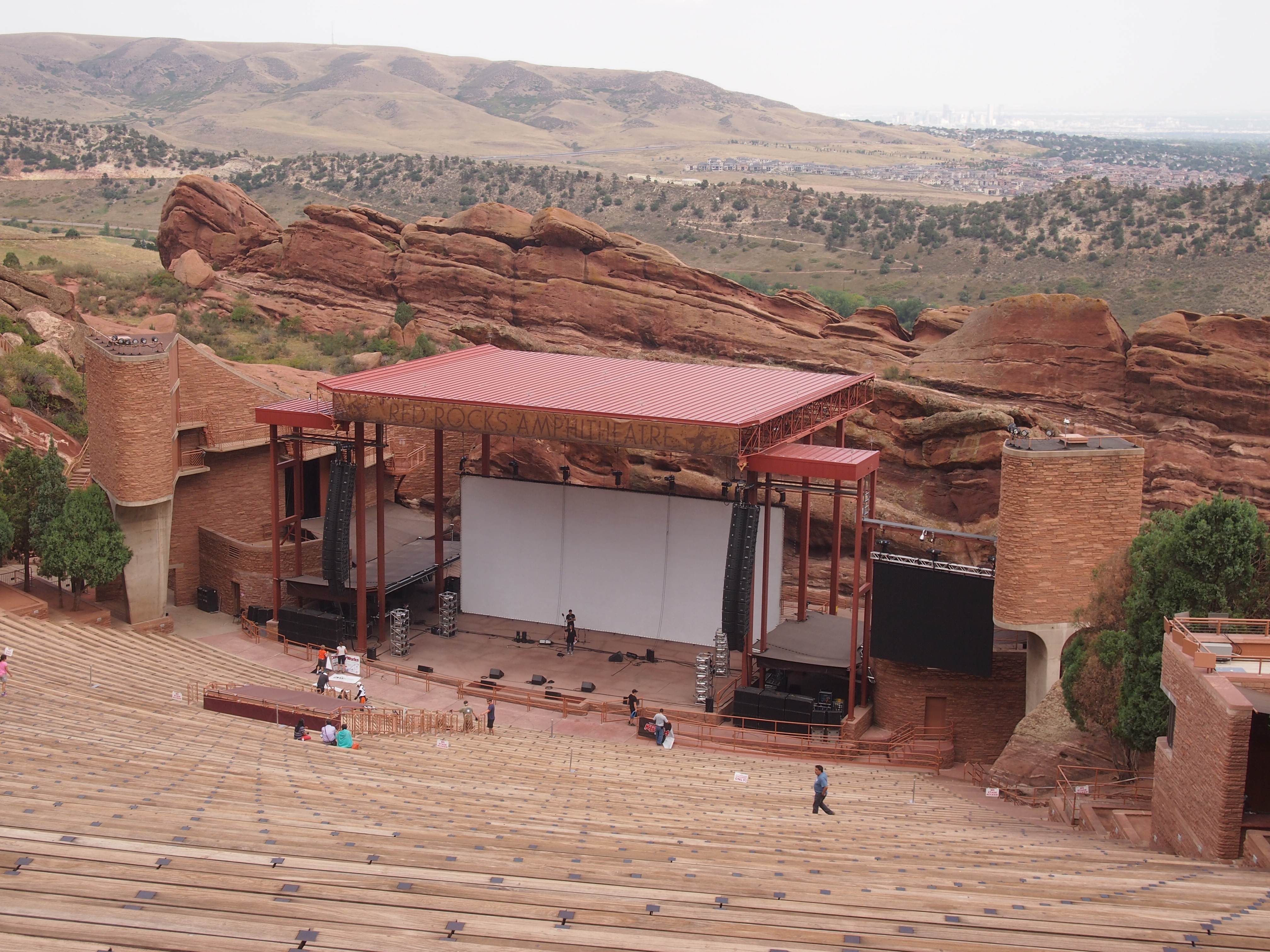 Or wander down toward the stage and look back.
Or wander down toward the stage and look back.
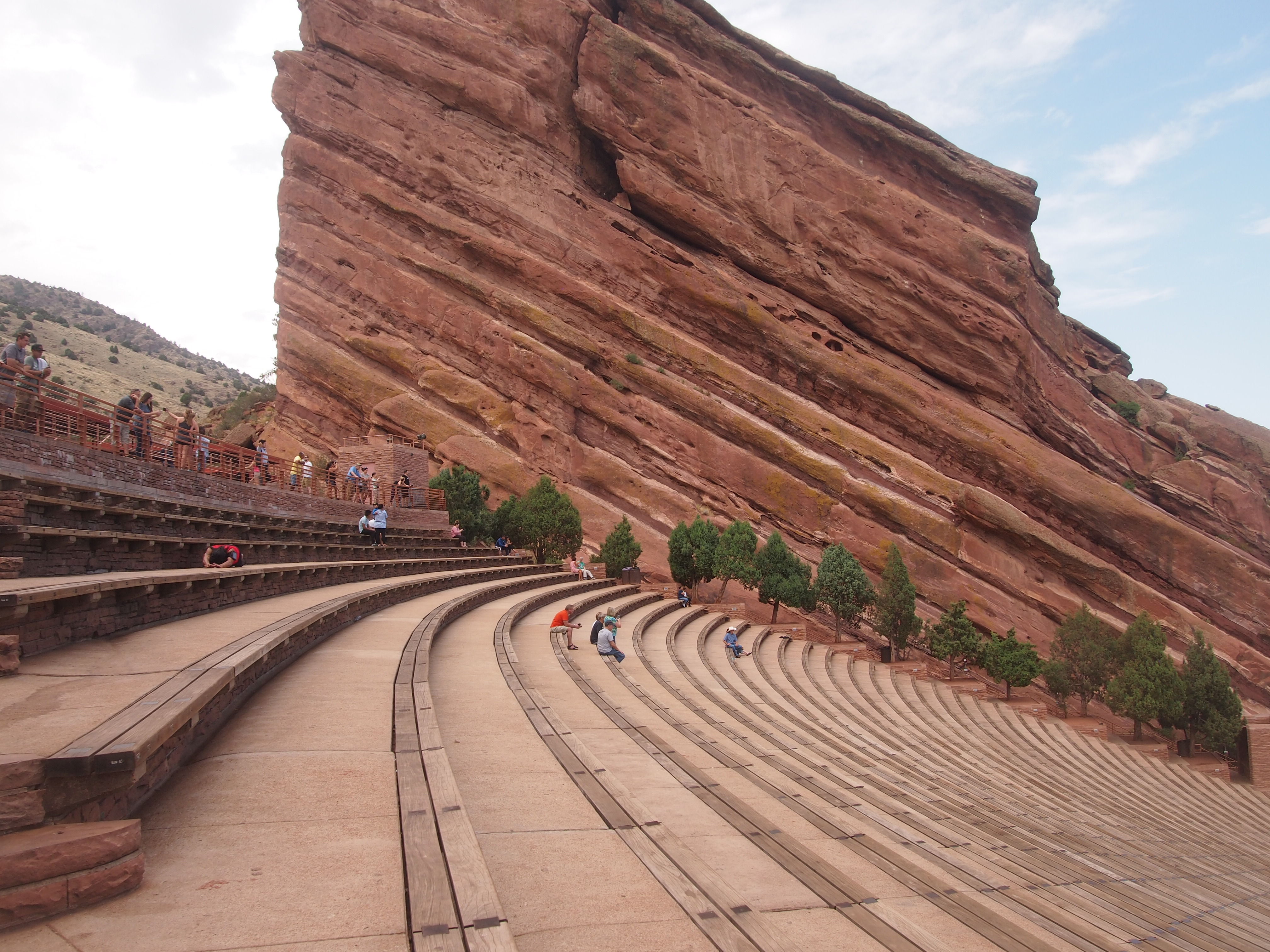 When there are no concerts, which is most of the time, the hard seats attract fitness enthusiasts to walk, run, do push-ups.
When there are no concerts, which is most of the time, the hard seats attract fitness enthusiasts to walk, run, do push-ups.
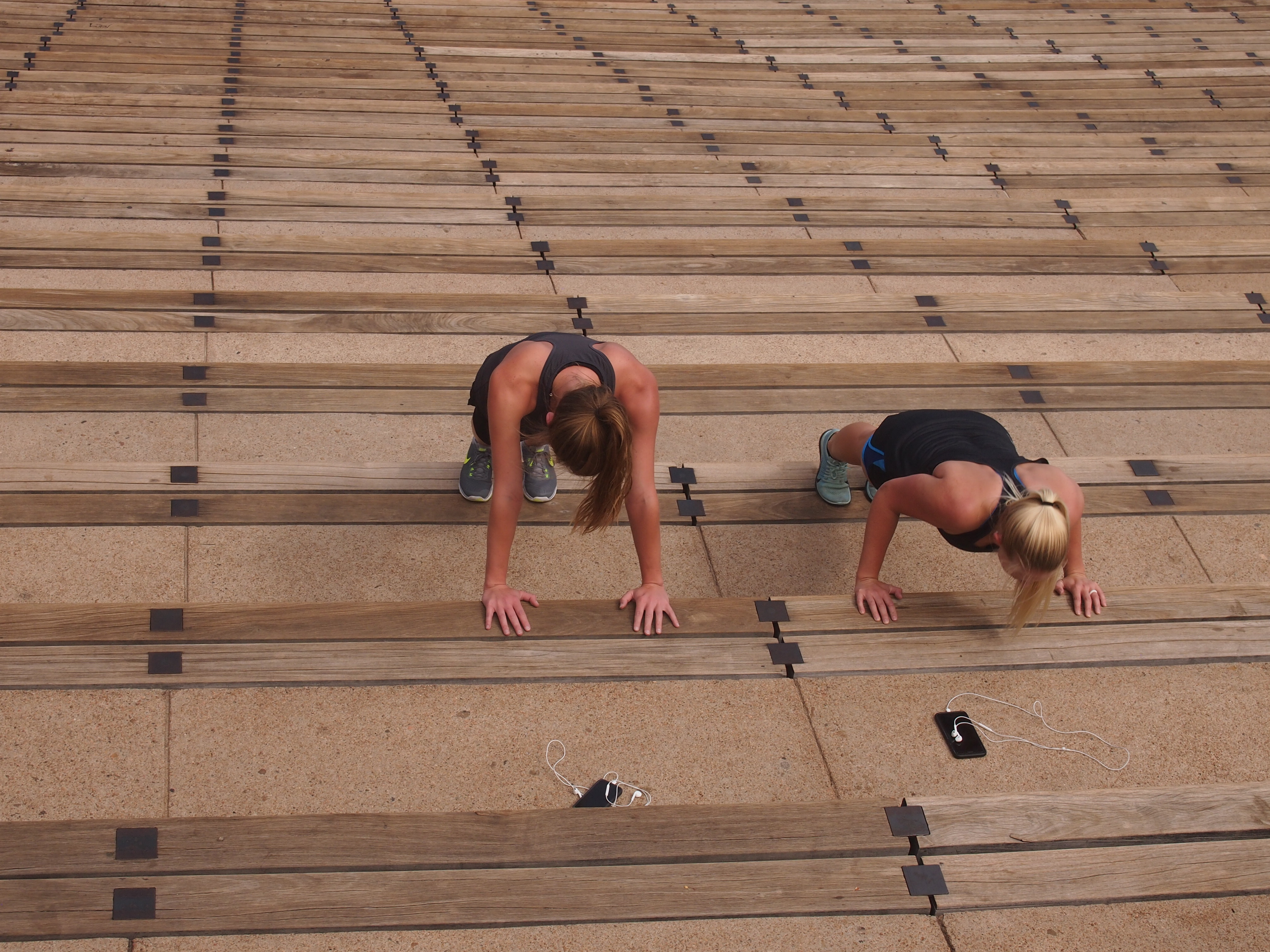 In prehistoric times, Utes lived around here, and I wonder if they gathered in the natural amphitheater. I like to think they did, for religious ceremonies, or maybe just to party. By the early 20th century, concerts and other events were being held there.
In prehistoric times, Utes lived around here, and I wonder if they gathered in the natural amphitheater. I like to think they did, for religious ceremonies, or maybe just to party. By the early 20th century, concerts and other events were being held there.
The City and County of Denver acquired the property in the 1920s, and in the 1930s, the CCC built a structure nestled into the natural amphitheater, using a design by Denver architect Burnham Hoyt, who reportedly modeled it after the Theater of Dionysus at the Acropolis in Athens.
I didn’t have time to take in a concert there. But if I ever make it back to Denver in the summer, I’m going to make the effort. The acoustics are supposed to be jim-dandy. Almost everyone who’s anyone has played at Red Rocks since the end of WWII. More about the venue is here.
The CCC workers haven’t been forgotten.
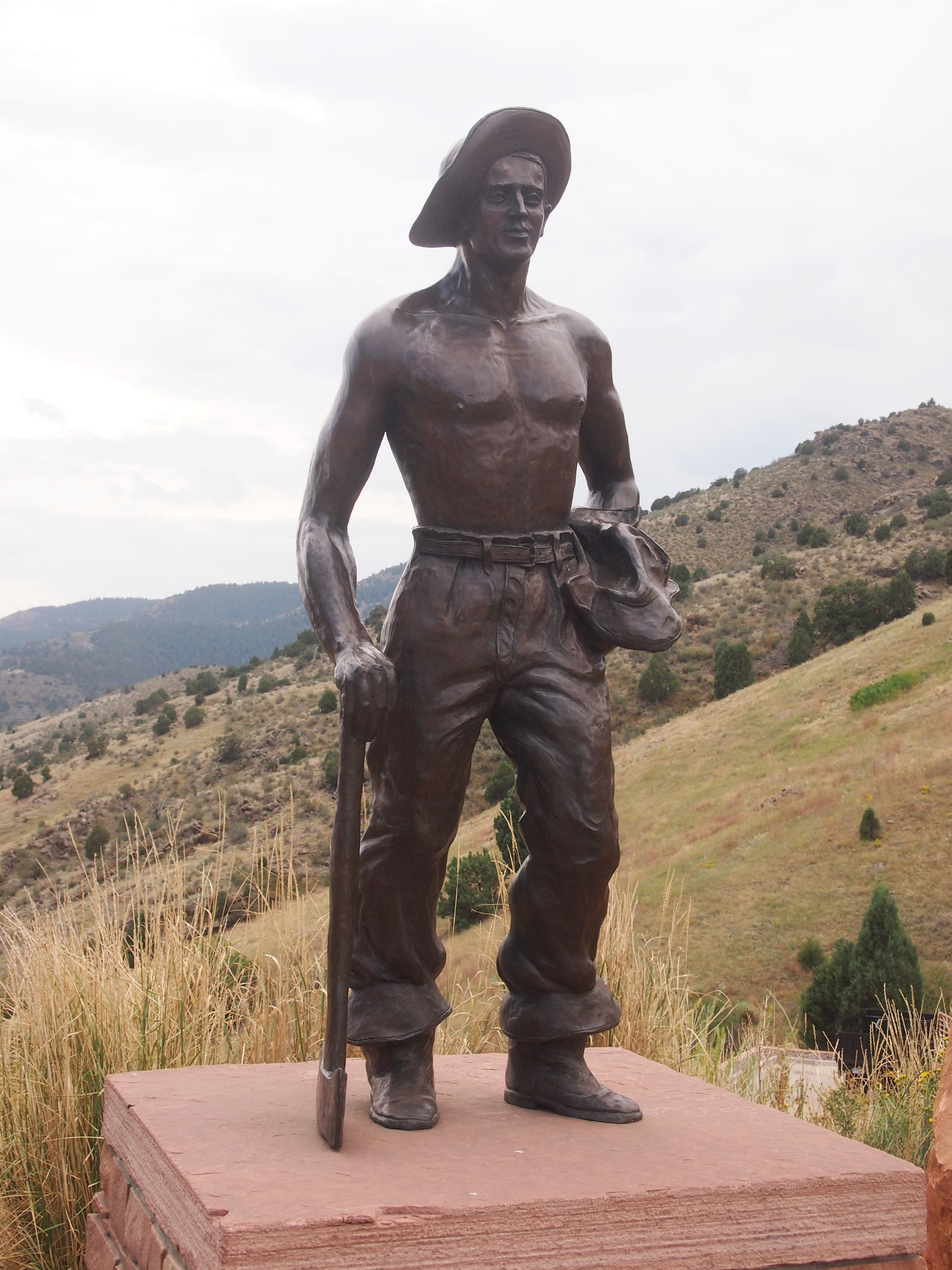 Not officially, anyway. CCC Alumni Chapter 7, along with the City and County of Denver, dedicated the statue in 1988. The plaque at the base of the statue says:
Not officially, anyway. CCC Alumni Chapter 7, along with the City and County of Denver, dedicated the statue in 1988. The plaque at the base of the statue says:
Dedicated as a memorial to all who served at Mt. Morrison and the 3 million who served in the CCC nation-wide [sic], 1933-1942. The CCC left its heritage in the preservation of America’s natural resources for enjoyment by all generations.
Guess CCC alumni are pretty thin on the ground these days — and former WPA workers, too — like veterans of WWII.
As the name says, the area is more than just the amphitheater, as excellent as that is. The park sprawls out in all directions, offering the kind of views you just don’t get in the Midwest.
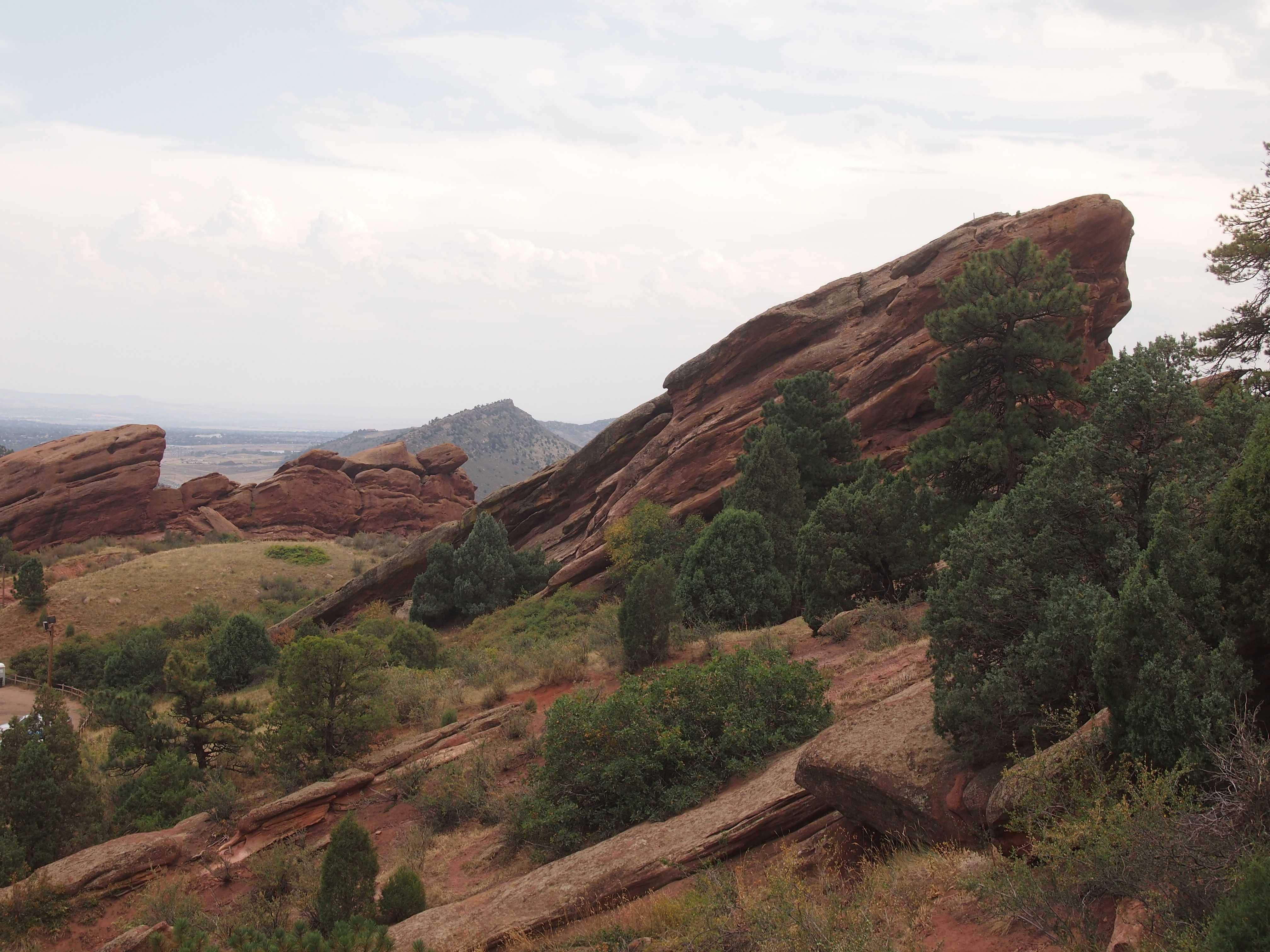
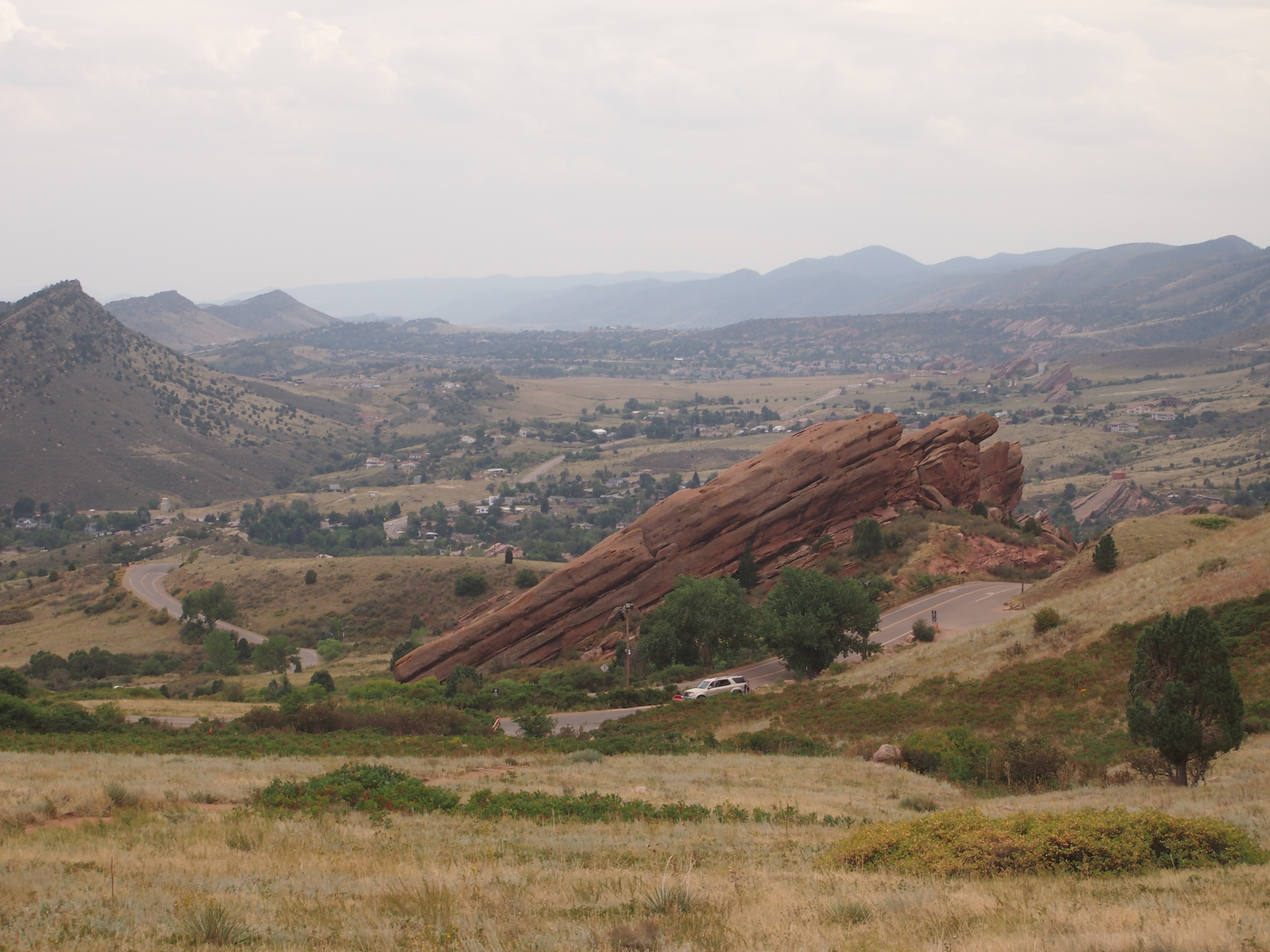
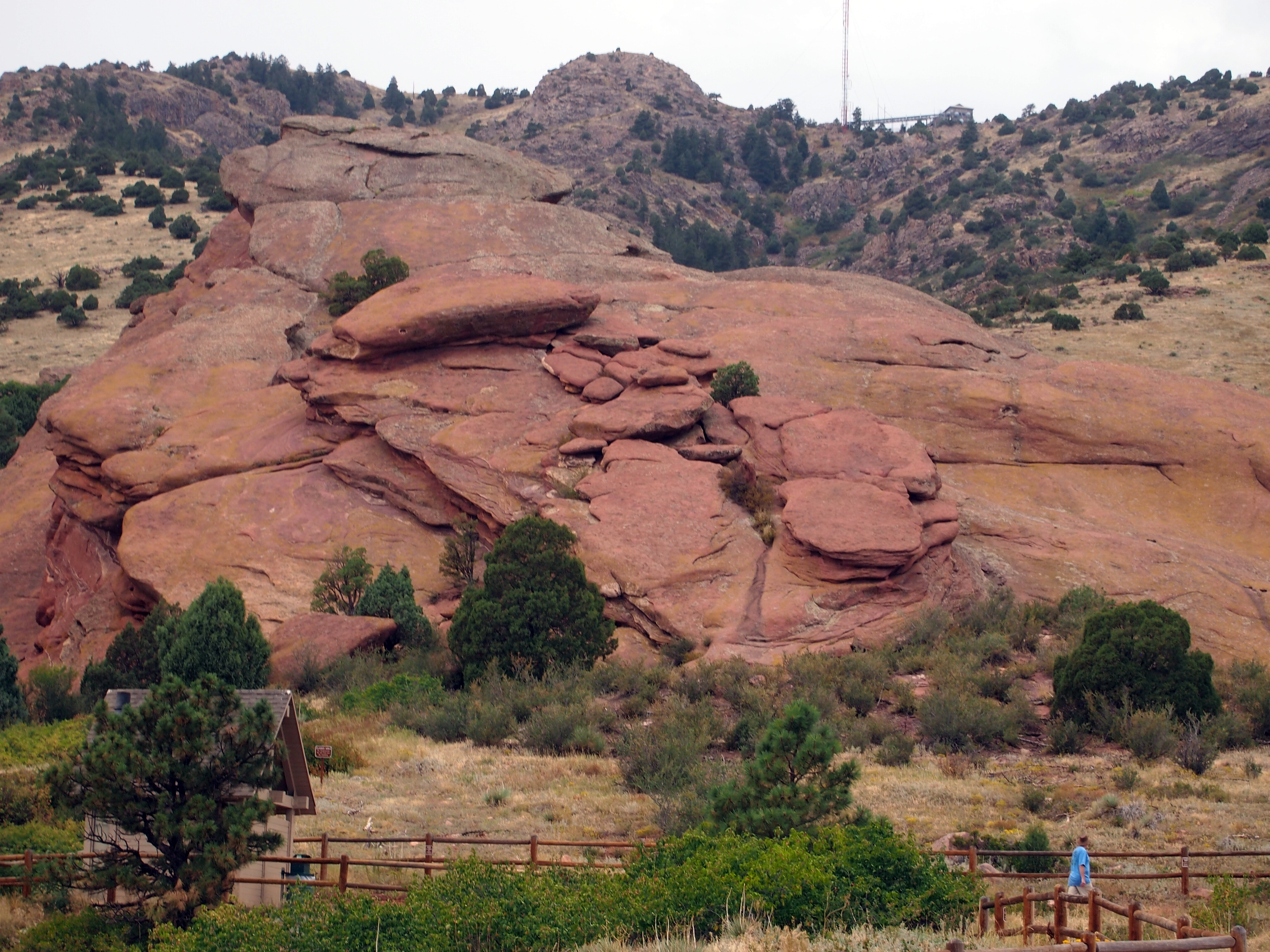
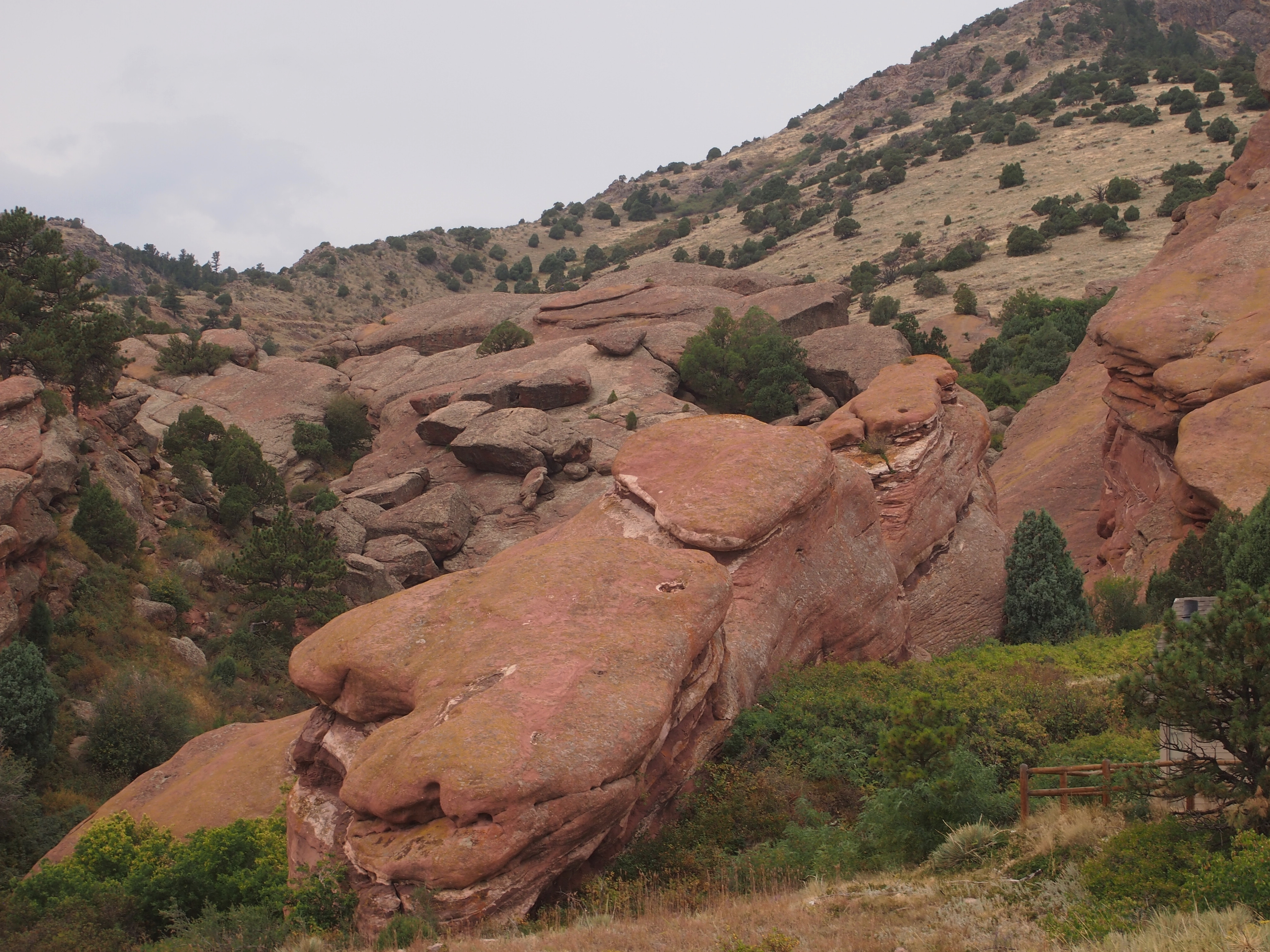
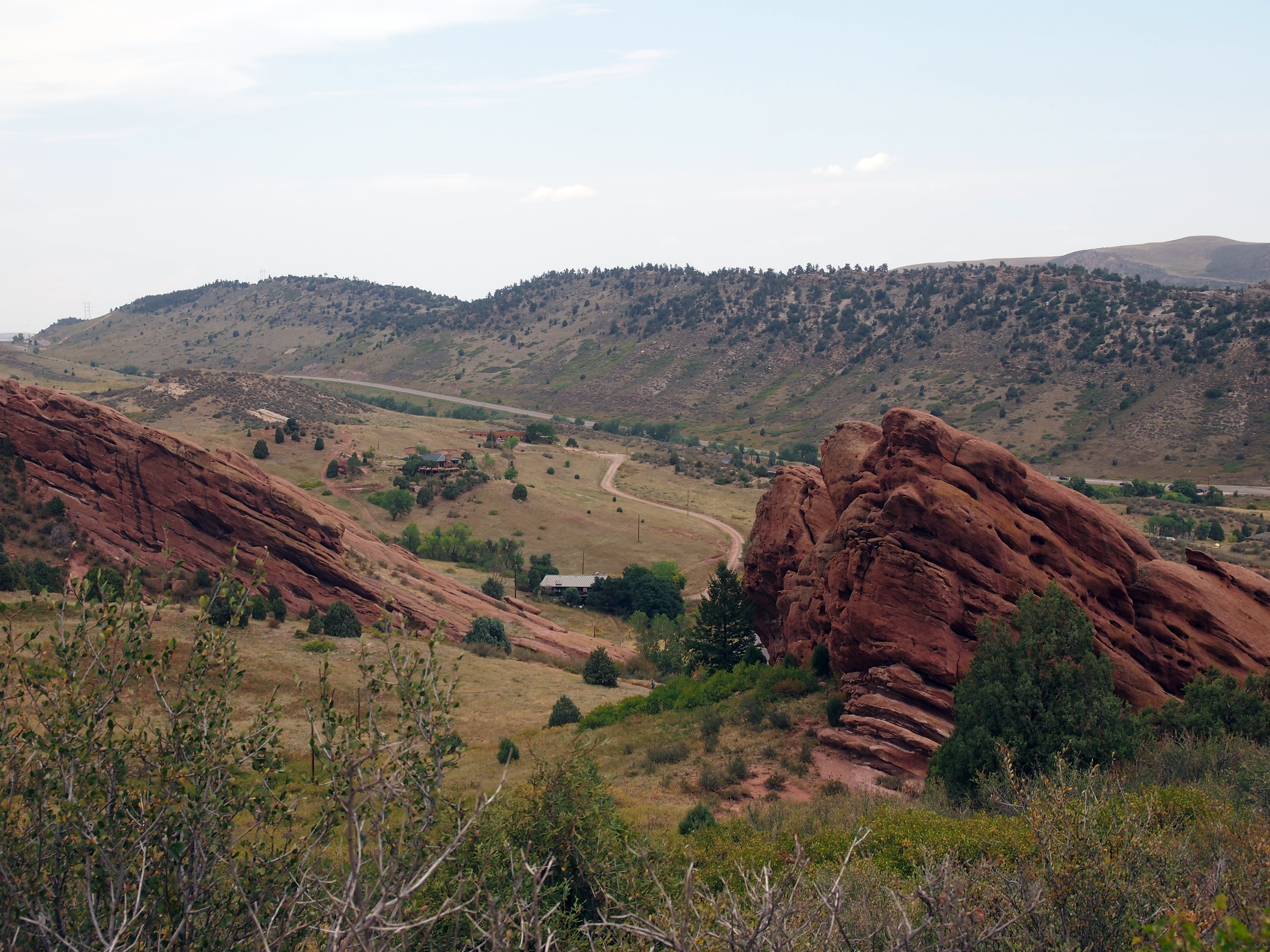
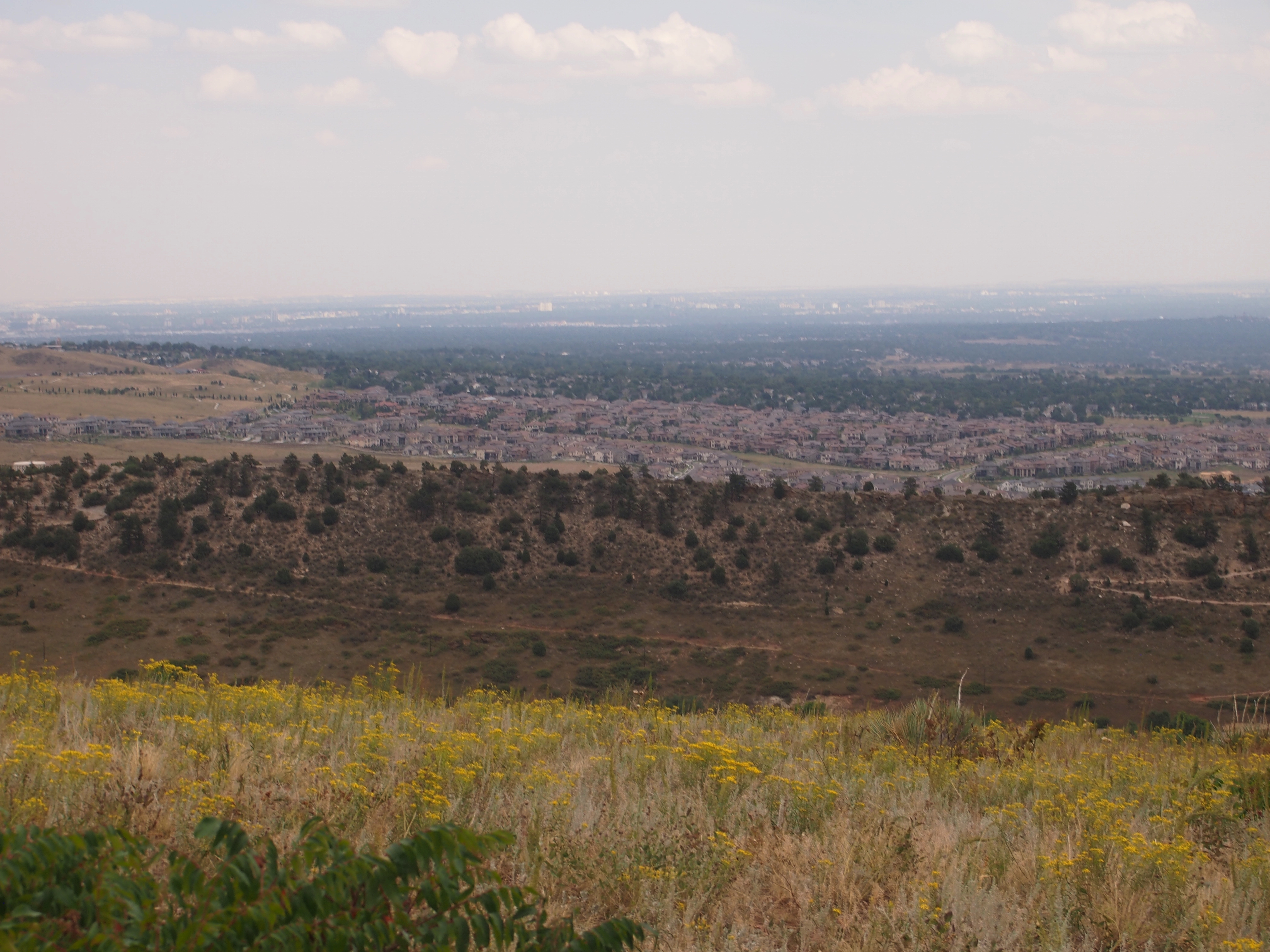 Off to the east, suburbs, and downtown Denver, are visible from the amphitheater, as well as from perches elsewhere in the park. But on September 10, the view that far was a little hazy.
Off to the east, suburbs, and downtown Denver, are visible from the amphitheater, as well as from perches elsewhere in the park. But on September 10, the view that far was a little hazy.
That was because of the thin smoke of Colorado forest fires, I found out later. A hint of the natural disasters that seem to be stalking the Earth with special intensity right now, though that’s an illusion. There’s always something bad (for humans) happening somewhere.
